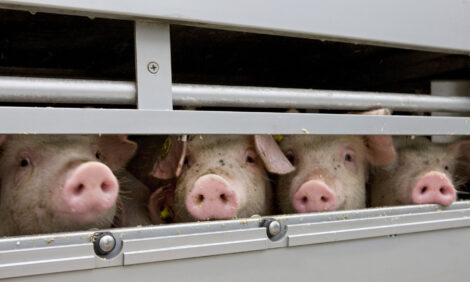



Oral Fluid Testing Expected to Expand Disease Spectrum
ANALYSIS - Oral fluid testing has made huge strides as a diagnosing and surveillance tool, and even more important, it has the opportunity to make a bigger impact by expanding the number of diseases it can diagnose.Dr. Jeff Zimmerman speaks to ThePigSite's Sarah Mikesell about oral fluid testing in the US and globally.
"We started working with oral fluids in 2005 doing research looking at a sample we could use in a diagnostic lab for testing," said Dr. Jeff Zimmerman, professor at the Iowa State University’s Veterinary Diagnostic Laboratory. "What we found is that in our initial work on porcine reproductive and respiratory syndrome (PRRS), we found that PCRs on oral fluids worked very well. In 2010, we started actually testing for PRRS in our laboratory."
The team has since expanded to include PCRs for several swine pathogens - mostly viral, but some bacterial. Also, both PCR-based assays and antibody-based assays are available for swine pathogens like PRRS, PCB2, influenza, and others. Iowa State's Diagnostics Laboratory will run about 175,000 oral fluid tests this year, he said.
Globally, oral fluid testing is being used in Europe, Asia and Latin America.
"It's really gone global - part of that is driven by the fact that we have seen the commercialization of some assays," he said. "The diagnostics companies driving PCRs, or even antibody-based assays, have kits for testing which makes it much easier for the rest of us - those who are working in diagnostic labs, to implement those kinds of tests."
In different regions, the kits will be used to fulfill the purpose of their testing, but in general, Dr. Zimmerman said they are a surveillance mechanism, allowing producers and veterinarians to collect samples over time to see exactly what is happening in the herd. Then, it's possible to start taking preventive action to stop pathogens that are causing clinical losses.
Other countries are also using oral fluid testing for herd surveillance, but ultimately the way they use it is going to be driven by what they need from their surveillance.
"In this country, we use it for decision-making and to prove negativity. You may have a PRRS site that you think is negative, and this is a way you can verify that," he said. "You can also use it to make decisions, for example with vaccine usage. We have some large systems that are using oral fluids to determine when and where they should vaccinate. It's too expensive to vaccinate every pig in a site, but you can select which buildings or when you want to use your vaccines."
The Future of Oral Fluids
Oral fluid testing will continue to expand because producers need to be more proactive in controlling diseases, he said.
"We're going to see people use it to understand what's happening in their herds and take action to stop clinical losses," he noted. "We're also going to see a continued expansion in the number of tests we have offered."
Currently, there are about six diseases that can be diagnosed using oral fluids, and Dr. Zimmerman expects that will continue to expand.
"We saw a recent example with Seneca Valley virus, and very quickly it was determined that we could use oral fluids for detecting Seneca Valley virus," he said. "That's going to continue to expand as we apply the same techniques to foreign animals diseases. We're going to see that we can strengthen our entire surveillance both in North America and elsewhere for so-called exotic diseases."









